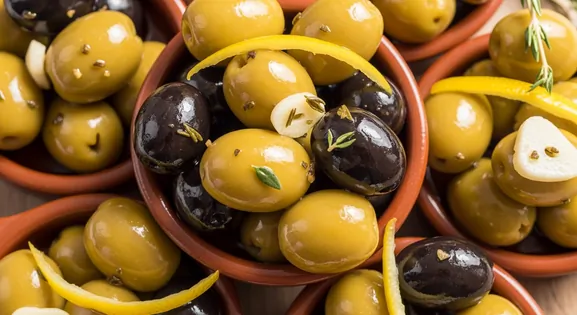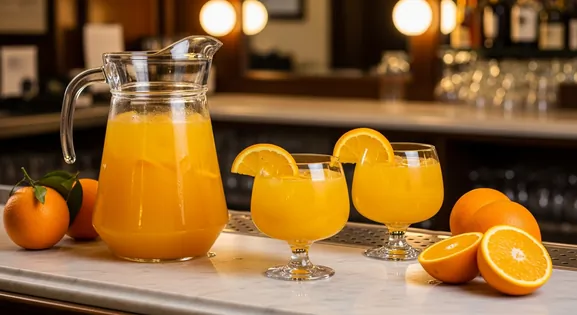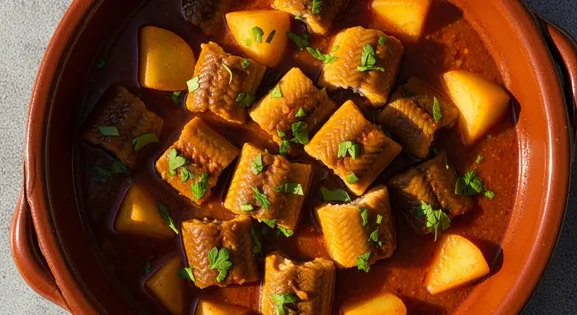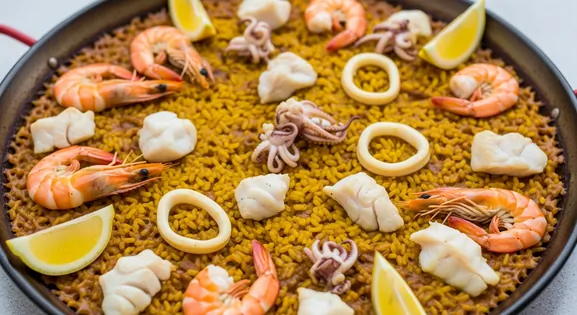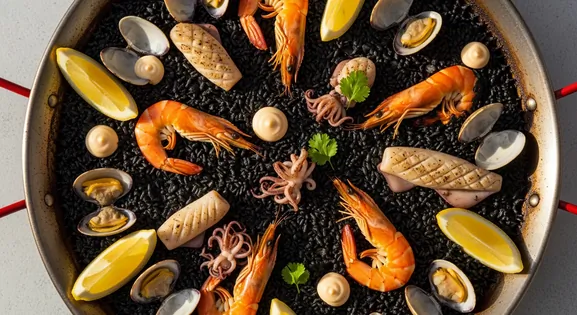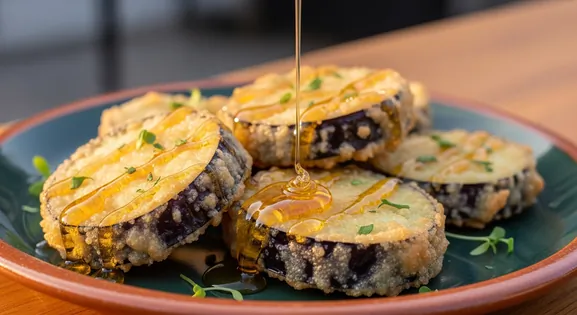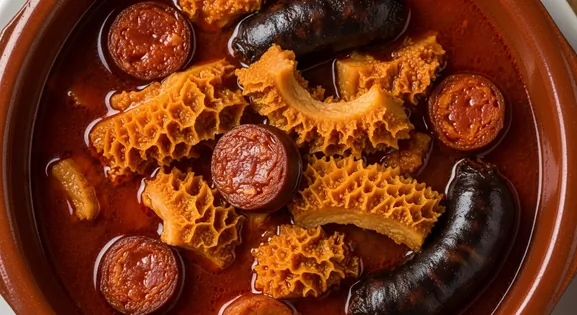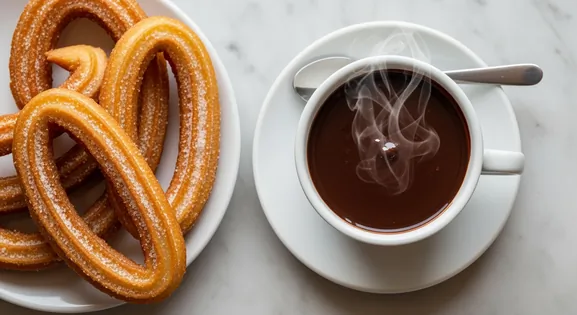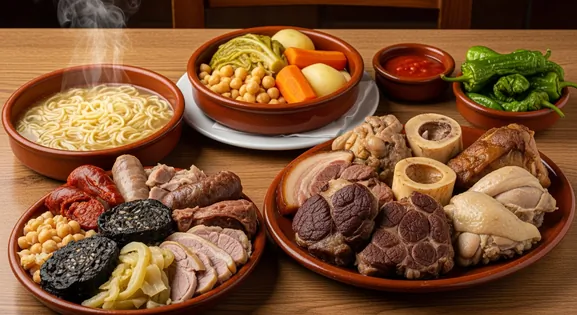Bocadillo de Calamares in Spain: A Complete Food Lover's Guide
Bocadillo de Calamares
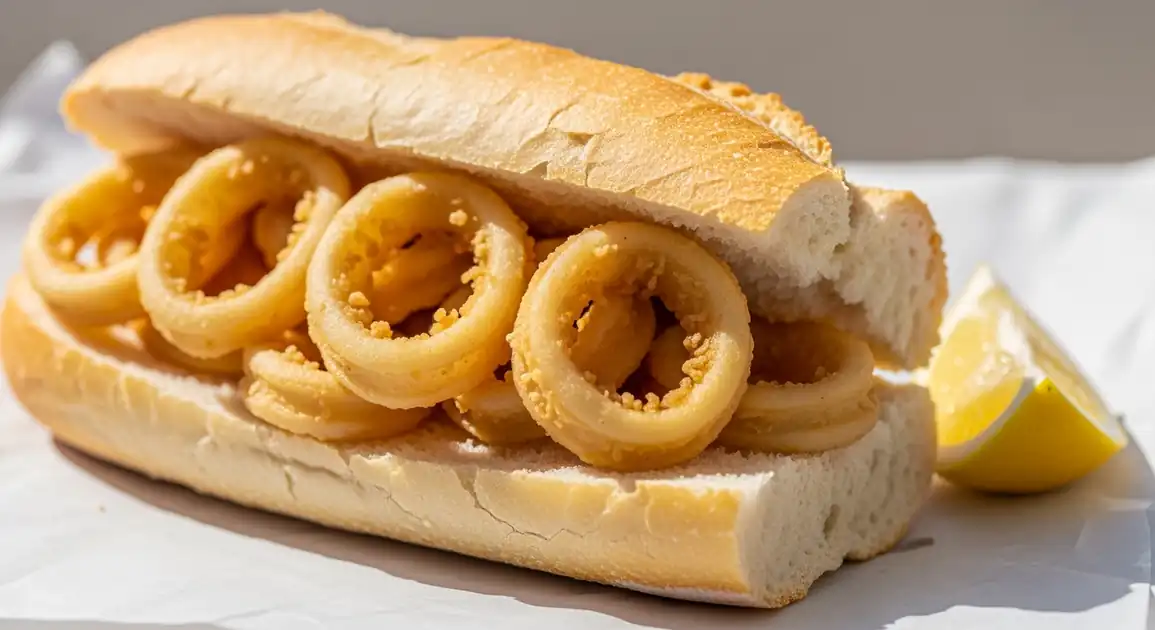
About Bocadillo de Calamares (Fried Squid Sandwich)
Bocadillo de Calamares is an iconic Spanish sandwich featuring golden-fried squid rings nestled in crusty white bread. This unpretentious yet satisfying creation balances the crispy, tender calamari with the bread's chewiness, typically enhanced with just a squeeze of fresh lemon. It's a staple of Spain's casual dining scene, enjoyed at traditional bars, market stalls, and neighborhood establishments across the country.
Traditional Preparation Techniques
Fresh squid rings are coated in a simple batter of flour, egg, and sometimes beer or sparkling water, seasoned lightly with salt. They're then deep-fried in olive oil or vegetable oil until golden and crispy. The key to excellent calamares is brief cooking at high temperature to prevent toughness. The fried rings are then stuffed generously into a crusty white baguette-style bread (barra de pan), sometimes lightly toasted. Traditionally served with lemon wedges on the side, the sandwich relies on the quality and freshness of both the squid and the bread rather than additional condiments.
Key Ingredients of Bocadillo de Calamares (Fried Squid Sandwich)
Fresh Squid Rings
The core of the sandwich, these rings should be sourced fresh, ideally from the Atlantic or Mediterranean. They are typically cut from the mantle of the squid.
Quality indicator: Look for plump, firm, and translucent rings with a mild, oceanic scent, not a strong fishy odor.
Crusty White Bread (Barra de Pan)
A key component, this is a simple, rustic baguette-style bread with a crisp exterior and a soft, airy interior. It provides the perfect textural contrast to the fried squid.
Quality indicator: The bread should be fresh, with a visibly crusty exterior and a soft, yielding crumb when pressed.
Light Batter
A simple mixture of flour, egg, and sometimes sparkling water or beer, designed to create a thin, crispy coating on the squid without overpowering its flavor.
Quality indicator: The batter should be light and golden-brown, adhering well to the squid without being excessively thick or greasy.
Perfect Partners: What to Pair
Caña (Small Draft Beer)
Beverage
A small glass of cold, crisp Spanish lager is the quintessential accompaniment, cutting through the richness of the fried squid and refreshing the palate.
Vermut (Vermouth)
Beverage
A popular aperitif in Spain, a chilled glass of red vermouth, often served with an orange slice and an olive, offers a slightly bitter and aromatic contrast to the savory sandwich.
From Humble Origins: A Brief History
This humble sandwich emerged as a popular offering in Spanish taverns and bars during the mid-20th century, particularly in bustling urban centers. Originally a convenient, affordable meal for workers, it evolved into an emblematic dish of Spanish food culture. While seafood might seem surprising in some inland regions, Spain has historically received fresh seafood from its extensive coastlines, with squid becoming a particularly beloved ingredient. Today, the Bocadillo de Calamares is considered a quintessential culinary experience, representing Spain's unpretentious approach to good food.
Local Bocadillo de Calamares (Fried Squid Sandwich) Variations in Spain
Classic Bocadillo de Calamares
The traditional version with just fried squid rings in crusty bread, served with lemon.
Bocadillo de Calamares with Aioli
The classic sandwich served with garlic mayonnaise (alioli) either inside or on the side for dipping.
Bocadillo de Calamares with Bravas Sauce
Featuring the spicy tomato sauce typically served with patatas bravas, adding heat and tanginess.
Deluxe Seafood Bocadillo
An upscale version that includes calamari along with other seafood like prawns or baby squid.
Bocadillo de Calamares on Mollete
Served on a softer, rounded traditional Spanish bread roll instead of the typical baguette.
A Traveler's Guide to Authenticity
What to Look For
-
Calamari fried fresh to order
Fresh frying ensures optimal quality and texture. Listen for the sizzle of squid hitting hot oil when you order.
-
Busy establishments with high turnover
Popular places cycle through ingredients quickly, meaning fresher calamari and reduced time for quality degradation.
-
Clean oil that's clear and not dark or smoking
Quality oil produces better-tasting, less greasy calamari and indicates good kitchen practices.
-
Crispy, golden-brown calamari (not pale or too dark)
Proper cooking ensures optimal quality and tender texture. Pale indicates undercooking, too dark suggests old oil.
-
Fresh bread with a good crust
Quality bread elevates the sandwich and indicates attention to detail throughout preparation.
What to avoid
-
Pre-fried calamari sitting under heat lamps
Squid that's been sitting out becomes tough and rubbery, and its quality rapidly diminishes.
-
Greasy, oil-soaked bread
Excessive oil indicates improper frying temperature or poor draining technique, affecting both quality and taste.
-
Fishy smell from the calamari
Fresh squid should have a neutral, oceanic smell. A strong fishy odor indicates old seafood.
-
Empty restaurants during peak meal times
Low customer volume can mean ingredients sit longer before being used.
-
Rubbery, chewy texture in the squid
Indicates overcooking or poor-quality frozen squid, suggesting general lack of attention to quality.
Explore Bocadillo de Calamares (Fried Squid Sandwich) in Detail: City Guides
Discover where to find the best Bocadillo de Calamares (Fried Squid Sandwich) and learn local tips in these cities:
Dietary Information
Dietary Information
Important Note for Travelers: Your safety is our priority. Below are the common allergens associated with the traditional preparation of this dish. However, recipes and ingredients can vary significantly between establishments. Always confirm all ingredients directly with the food vendor before ordering, especially if you have a severe allergy.
Potential Allergens
Dietary Suitability
How to Order Bocadillo de Calamares (Fried Squid Sandwich)
Frequently Asked Questions about Bocadillo de Calamares (Fried Squid Sandwich)
What is Bocadillo de Calamares?
Bocadillo de Calamares is an iconic Spanish sandwich consisting of deep-fried squid rings (calamares a la romana) served in a crusty white baguette-style bread roll (barra de pan). It's a simple but beloved staple of Spanish food culture, often served with just a squeeze of lemon. The contrast between the crispy, tender squid and the crusty yet soft bread makes it particularly satisfying.
Is Bocadillo de Calamares a smart choice from street vendors?
Bocadillo de Calamares is generally a smart choice when purchased from reputable venues. Look for places where the calamari is fried to order, ensuring it's hot and fresh. Popular bars and markets with high turnover are typically excellent indicators of quality. Avoid places where the squid looks like it's been sitting under heat lamps for extended periods. The best sandwiches come from establishments that are busy with locals—a good sign of both quality and freshness.
What's the best time to eat Bocadillo de Calamares?
While available throughout the day, it's traditionally enjoyed as a mid-morning snack (almuerzo) or a lunch item (1-3 PM). Many locals also enjoy it after a night out. Visiting during peak meal times, especially lunchtime, often ensures the freshest experience due to high turnover.
What should a good Bocadillo de Calamares look and taste like?
A quality Bocadillo de Calamares features freshly fried, golden-brown squid rings with a light, crispy, non-greasy batter. The squid should be tender, not rubbery. The bread should be crusty outside and soft inside, ideally fresh. It's a minimalist sandwich, relying on the contrast between crispy calamari and fresh bread, often with a squeeze of lemon. The squid should taste fresh, not fishy.
Where can I find quality Bocadillo de Calamares?
Look for establishments specializing in traditional Spanish sandwiches or seafood. Busy local bars and market food stalls are excellent choices, as high turnover ensures freshness. Seek out places displaying "Especialidad: Bocadillo de Calamares" signs. Visiting during peak meal times (e.g., 1-3 PM for lunch) can also indicate a popular and reliable vendor.
Is Bocadillo de Calamares suitable for people with dietary restrictions?
Bocadillo de Calamares is not suitable for vegetarians, vegans, or those with shellfish allergies due to the squid. It's also not gluten-free because of the wheat flour in both the bread and the calamari batter, which typically contains eggs. There are no common vegetarian variations, as the squid is the essential component.
Expert How-To Guides about Bocadillo de Calamares (Fried Squid Sandwich)
How to Spot a Great Bocadillo de Calamares
Learn to identify quality calamari sandwiches by observing key indicators that signal freshness and proper preparation, ensuring a delicious and authentic experience.
- Watch for places frying calamari to order - the sizzling sound and aroma of fresh frying is a good sign.
- Look for golden-brown, evenly cooked calamari with a light, crispy coating (not pale or too dark).
- The bread should be fresh with a crispy crust and soft interior.
- Quality venues will offer fresh lemon on the side.
- The sandwich shouldn't leave excessive oil on the paper or your hands.
- Busy establishments with locals ordering the same dish typically indicate good quality.
- For the most authentic experience, choose places that have been operating for many years (look for signs saying 'desde 19XX').
How to Eat Bocadillo de Calamares Like a Local
Enjoy this Spanish specialty the authentic way by following these customs, enhancing your culinary experience and blending in with local dining habits.
- Add a squeeze of fresh lemon directly onto the calamari before your first bite.
- In bars, eat it standing at the bar counter ('barra') for the most authentic experience.
- Pair it with a caña (small draft beer) or vermut (vermouth) as locals do.
- Don't ask for too many additional sauces - traditionally it's enjoyed simply.
- Eat it while it's hot - don't let it sit as the bread can become soggy.
- If in a group, it's common to order one to share as a tapa before moving to the next bar.
- Use the provided napkins liberally - it can be messy but that's part of the experience!
Finding Authentic Bocadillo de Calamares in Spain
Navigate Spain's food scene to discover the most authentic calamari sandwich experiences, focusing on traditional establishments and local preferences.
- Explore traditional areas known for local eateries.
- Look for bars with 'Especialidad: Bocadillo de Calamares' signs or calamari imagery in their windows.
- Visit during Spanish meal times (especially 1-3 PM for lunch) when turnover is highest.
- Avoid restaurants with pictures of food or menus in multiple languages aimed at tourists.
- Check if locals are ordering and enjoying the sandwich - the best endorsement.
- Consider historic establishments that have specialized in this dish for decades.
- Don't be deterred by simple, no-frills places - they often serve the best traditional food.
Our Commitment to Quality
At Tasteplorers, our mission is to provide the most accurate and useful travel information in the world. To achieve this, all content on this site is created through our unique editorial framework. We utilize leading AI research tools, guided by our proprietary prompts, and a multi-stage validation process. This entire system is overseen by our editorial team to ensure everything we publish meets our high standards for accuracy, cultural nuance, and practical value for travelers.
Learn more about our Editorial Process and our Mission.
Countries
Explore regions
Europe
Discover Europe's diverse culinary landscape, from Mediterranean flavors to hearty Alpine fare. Learn to navigate markets, decode menus, and eat like a local.
Latin America & Caribbean
Discover the vibrant cuisines of Latin America & the Caribbean. Our expert guide covers everything from Mexican street food to Peruvian ceviche and market tips.
Oceania
Explore Oceania's diverse food scene. Learn about Polynesian earth ovens, Fijian feasts, and the vibrant café culture of Australia and New Zealand.
Southeast Asia
Explore Southeast Asia's diverse food cultures from Thailand to Vietnam. Get expert tips on navigating spice levels, choosing quality vendors, and understanding the rich traditions of the region.
